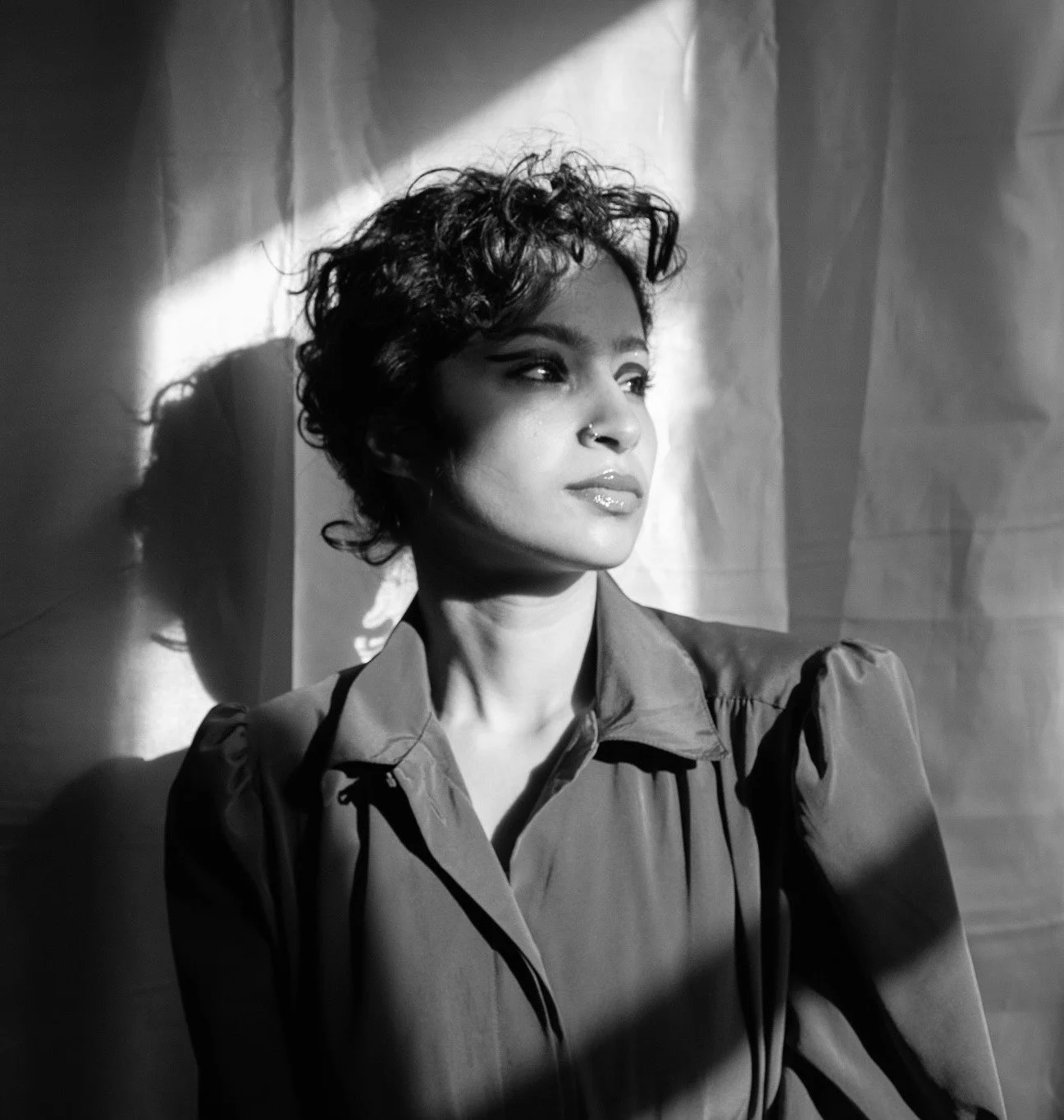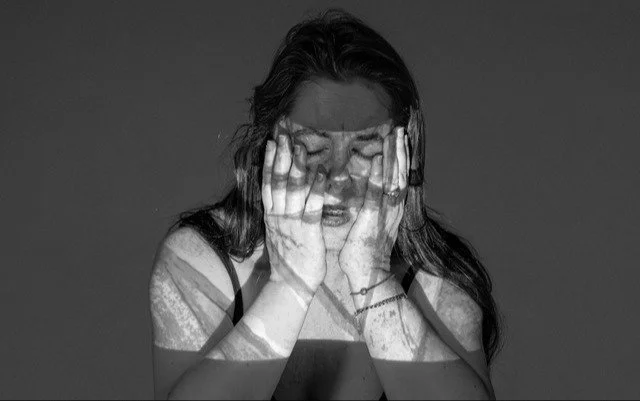HOPE BOYKIN'S movements of meaning
Two time “Bessie Award” winner, Hope Boykin, director of HopeBoykinDance, was an original member of Complexions Contemporary Ballet company. She danced with Philadanco – The Philadelphia Dance Company, and completed 20 years to great acclaim with the world-renowned Alvin Ailey American Dance Theater. Hope has choreographed for numerous dance companies, including three works for the AAADT. Her commissions include the Philadelphia Ballet, Vail Dance Festival, and Dallas Black Dance Theater.
She has choreographed and co-directed both off-Broadway and regional theater. She serves as Artistic Advisor for Dance Education for the Kennedy Center and Artistic Lead for the Kennedy Center Dance Lab. She is Artist-In-Residence at USC Glorya Kaufman School of Dance, a 2022-23 Fellow of The Center for Ballet and the Arts at NYU, and is currently a professor at Howard University, her alma mater. Her short film, Beauty Size & Color presented on PBS.org, was nominated for a 2023 NY Emmy Award. States Of Hope, a fully scripted, evening length, dance theater work, was presented at the Joyce Theater in October 2023. Her most recent dance, Manifesting Legacy, was selected for the finale of the 92NY150 celebration. As an educator, creator, mover, and motivator, Hope firmly believes there are no limits.
Catherine Tharin interviewed Hope Boykin after the success of her premiere, Manifesting Legacy. The interview is edited and condensed.
Interview by Catherine Tharin
Hope, you are a recognized and lauded dancer, with 20 years as a soloist with the Alvin Ailey American Dance Theater. You retired due to injury, but your career keeps blossoming. Describe the adjustments you have made.
I’m dealing with a body that looks different and feels different and has a different calling. I have physical restrictions now, and at times my movement is to simply inhale and exhale, but that helps me, “see” through movement. I can direct movement. What’s lacking in one space is built up in another.
Watching the younger bodies who want to learn from me is good because I don’t feel impaired or restricted since I live through them. Making work through restrictions makes you articulate. There is no limit to how you can express yourself to someone. If I can express to my students in all those little Zoom boxes (during the pandemic) and see the same shape coming out of their bodies, I know I’m doing well. I try to do that in the studio. Positivity is the work. I agree about the positive sides of moving forward because it’s so easy to walk around in the negative. It’s so easy to think it’s not going to work. It takes one person who criticizes you for you to believe that you can’t do it. I try to share with others the person I long to be.
What other avenues of creativity are you pursuing?
I want to build work; I want to create. States Of Hope is a dance theater work I wrote, directed, and choreographed. Once our week at the Joyce (Theater) finished (October 2023), I said, “What will I write next?” I’ve always loved to write; creative writing is so cool. I have all my journals from junior and senior high school. I want to continue to write. I’d like to stand behind the camera and direct. Do I want to be on Broadway? Sure. Is it too late to shift? No, it’s all creativity. Go toward that one thought and put that thought on stage. I work to make things happen rather than wait to have things happen. At one point I said, “I wish I could do that.” Now, I try to say, “Do that!” Fortunately, I have a great group of supporters in and out of the studio.
Being a creator is a lonely life; you wake up with your thoughts and insecurities. When making something to share, I need to like what I make first, but I’d love it if you like it, too. If you don’t, that needs to be okay.
In my writing I use the four archetype states of being that a protagonist experiences – the orphan, the wanderer, the hero and the martyr. Daily, you are going through these aspects of life. In these states, your brain and your heart move forward. You stand on your own ideas and mission. Folks can come with you, but you have to believe in what you’re doing.
What is success? Walking into a room as a leader? People who want to work with you? Is it the paycheck? There are so many boxes that we want to check, but my personal success should be measured only by me.
Please describe your approach to teaching.
I walk into any studio, a master class, with college students or companies, and I lay down my main rules, the most important being that “NO” is my favorite word. When we can share truth with honesty, everyone can move forward with kindness.
We need to be kind when we correct dancers. Corrections show a dancer that you care. There should be a standard, and it should be wrapped up in care. My goal is to show love and appreciation. I love you and I want you to do better. I love you so much I’m going to tell you the truth. I had those people in my life – I had that love.
Who influenced your teaching philosophy?
I grew up in a house of educators in North Carolina. Everything they did for me helped propel me forward. The more I honored this route of education, the further I could get. Although, it felt at times they were more concerned about grades, and not necessarily the process. However, the process ensures clarity, understanding, and ultimately the best grade, the best results. My parents grew up in a time when it was very difficult for Black people, especially Black women. It felt they were harder on us, their children, but they knew as Black people we’d have to work harder. What I have experienced and endured continues to shape me. Often, the shaping is uncomfortable, but through discomfort, I am finding who I can be. For example, I am a woman of faith, but I don’t need to explain my faith to anyone. I need to live it so that I can share it.
Carmen de Lavallade, the legendary dancer, was a big influence on my life. The first time I worked with her was in an International Association of Blacks in Dance conference master class in North Carolina. The way she shared Horton's technique (CT note: Lester Horton developed a dance technique embraced by Alvin Ailey and taught at the Ailey School) was much more round than linear. Linearity is how Horton is usually taught. She talked about it differently than I’d understood before. I had to listen to this woman, knowing she was one of the reasons I was doing what I was doing.
I hope to give those who hear and work with me a clear understanding; often times it is not what you expect. The best way you can convey what you know is to, for instance, add a bit of salt. A little salt to chocolate chip cookie dough enhances the sweetness. That’s where the better comes – sharing how to move and how to move better so that someone can live and love dance longer with the whole truth.
I was taught so much at ADF (the American Dance Festival). My teachers included choreographers Talley Beatty, Lucas Hoving, Fred Benjamin, Bernard Johnson, Doug Varone, and Dr. Pearl Primus. Dr. Primus said to me, “Hope, darling, you think you’re doing it, but you’re not.” She was telling a truth.
Hope Boykin's Manifesting Legacy at 92NY's 150th anniversary gala. Photograph by Richard Termine
The notable Harkness Dance Center at 92NY, known for supporting up-and-coming legendary choreographers of their generations since 1935, is celebrating its 150 years. Alvin Ailey’s beloved signature dance, Revelations, premiered at 92NY in 1960. The 92NY150 celebration featured Ailey’s dances (along with Martha Graham’s and José Limón’s). Your dance, Manifesting Legacy, was selected as the finale. Tell us about this experience.
It was nerve-wracking when I saw that my new work was programmed last, sitting on the heels of so many classic dances. I had to let it go and do the work, know why I was making the work, and share the honest idea of how legacy should look. The cast consisted of an artist I’d performed with in the early 2000s, current dancers of mine, and three Ailey School students; legacy was actually present, and it felt good.
The program at 92NY150 included The Limón Dance Company and in Limón’s lineage, Omar Román De Jesús, the Martha Graham Dance Company and in Graham’s lineage, Jamar Roberts, and Ailey II (founded in 1974 as the second company to AAADT) and in Ailey’s lineage, my dance. Every person, every act, every presentation had some “Ailey” in it. Everyone on the program was affected by Ailey in some way, whether it was the school or the company. (CT note – Ailey studied the Graham dance technique, danced and directed Lester Horton’s Dance Theater, danced on Broadway, and danced with many companies including those of Graham dancers, Anna Sokolow and Sophie Maslow.)
It was incredible being at 92NY150 and seeing those who influenced you and who you influence. Matthew Rushing, a fellow AAADT dancer, choreographer, and interim artistic director, said when he choreographed ODETTA (2014), he knew it was going to be okay to make the work because he realized everyone he worked with was an ingredient in his life. I agree with this sentiment, I said when choreographing Manifesting Legacy, “We’re going to Graham it here, Milton Myers it there, and Ronald K. Brown is here.” You acknowledge artists who have given you something. When I teach, I give ownership to those who I’ve worked with and who influenced me. I pass it on to them, and they pass it on to someone else.
Could you please explain your approach to choreographing Manifesting Legacy?
The opening shapes in my dance, Manifesting Legacy, are influenced by many of Mr Ailey’s works. We started with linear lines, moving slowly, built and learned from the basics, and then personalized it. I wanted to take the movement I loved and allow it to grow through my personal movement language. I have heard Jawole Will Jo Zollar, the founder of Urban Bush Women, say as an educator she wants to give students a guided choice. I love this so much as no one person is the same. We want to point them in the direction we believe is correct, but it’s up to them to choose. The shape and the count are part of the map, but how we arrive is individual. Each artist simply needs to be themselves, knowing where they’ve been and going where they feel they desire.
CATHERINE THARIN choreographs, curates, teaches, and writes. She danced in the Erick Hawkins Dance Company in the 1980s and '90s, was the Dance and Performance Curator at 92NY, NYC, for 15 years, and was a senior adjunct professor at Iona College, New Rochelle, NY, for 20 years. She writes dance reviews for The Dance Enthusiast and The Boston Globe, articles about dance for Side of Culture, and reports on dance for WAMC/Northeast Public Radio. She curated a 2024 dance season at Stissing Center, Pine Plains, NY. She continues to teach the Hawkins philosophy, technique, and repertory as an artist-in-residence. Her latest dance is a collaboration with jazz composer Joel Forrester and filmmaker Lora Robertson. Says Fjord Magazine of her work presented in November 2023: "gentle and precise movement contained to a small range, a good deal of floor work...cast a net of whimsical translucent sheen over it all. The evening was consistently charming, well-crafted and paced."







